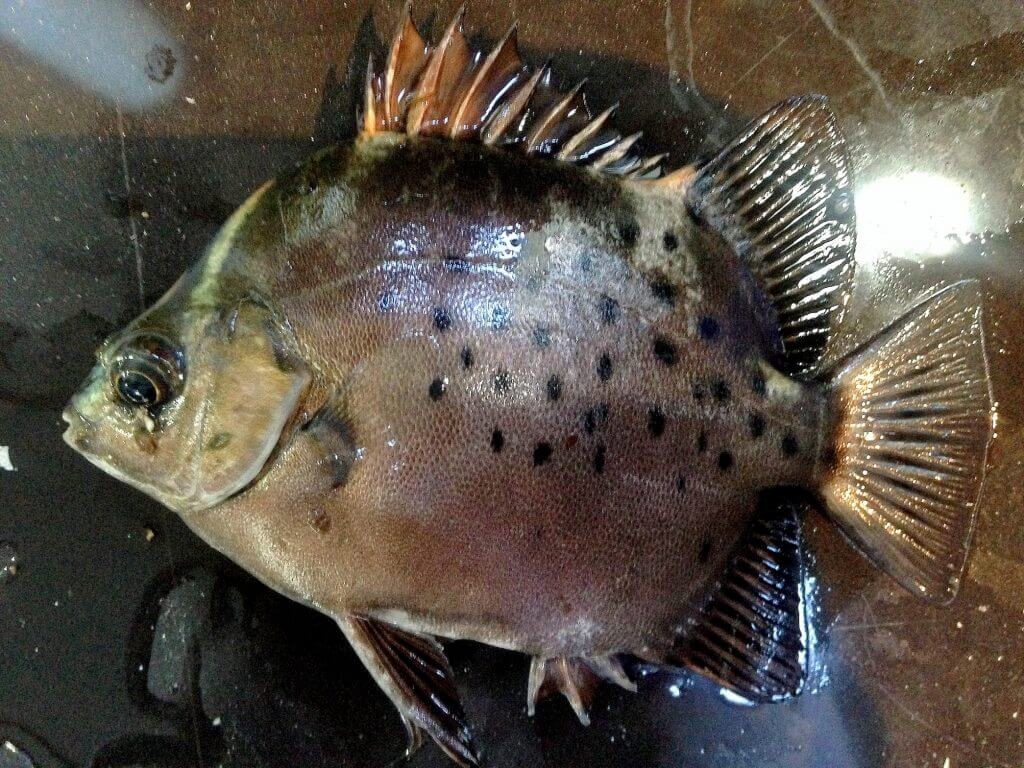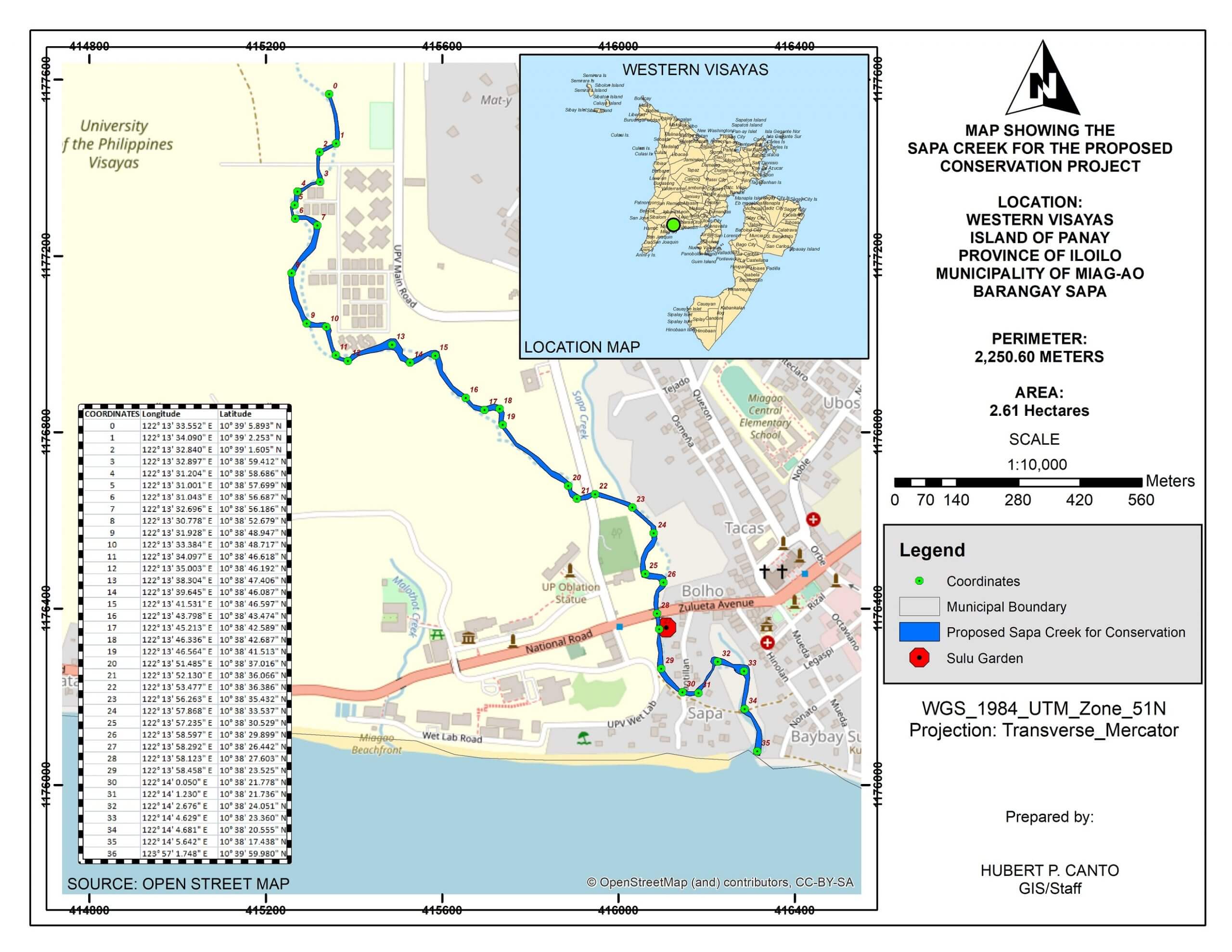Conservation of Creeks and Estuaries
Creeks and rivers are often used as dumping grounds for wastewater and solid wastes. The esteros (canals) of Metro-Manila) has been an excellent example of such massive environmental damage in the recent past. Mitigation efforts by local and national agencies had restored the esteros into their former pristine condition, with fish returning. Similar efforts in provincial cities are being duplicated, such as the recent successful rehabilitation of the Iloilo River. Such efforts should be nationwide. Small streams and seasonal creeks are often forgotten or ignored as targets for conservation.

(Clockwise) Philippine Hawk-Cuckoo (Hierococcyx pectoralis), Spangled Gudgeon (Ophiocara porocephala), unidentified fish species, Indo-Pacific Tarpon (Megalops cyprinoides), Spotted Scat (Scatophagus argus) and another unidentified fish species. All of these were found within Sapa Creek.
 To demonstrate the importance of small rivers, Sulu Garden Foundation (SGF) had begun a program to survey Sapa Creek which passes alongside SGF headquarters. Below is the recent survey of the creek that begins in the open field 1.66 km from the National Highway and terminates into Panay Gulf (Sulu Sea). During the rainy season from June to January, the creek is water-filled and seasonally floods. It is home to many bird species, and a hunting ground for monitor lizards, pythons and other terrestrial organisms. Underwater, the creek is home to native species, such as “haruan” (snakeheads), various species of shrimps, “bulan-bulan” (Megalops cyprinoides), “ubog” and others.
To demonstrate the importance of small rivers, Sulu Garden Foundation (SGF) had begun a program to survey Sapa Creek which passes alongside SGF headquarters. Below is the recent survey of the creek that begins in the open field 1.66 km from the National Highway and terminates into Panay Gulf (Sulu Sea). During the rainy season from June to January, the creek is water-filled and seasonally floods. It is home to many bird species, and a hunting ground for monitor lizards, pythons and other terrestrial organisms. Underwater, the creek is home to native species, such as “haruan” (snakeheads), various species of shrimps, “bulan-bulan” (Megalops cyprinoides), “ubog” and others.
The ground truthing of the Sapa Creek was conducted last February 8, 2022 with the SGF staff and Geographical System Information (GIS) Specialist. This survey was done during the dry season. The creek has a perimeter of 2,250.60 meters and an area of 2.61 hectares.
Our most unexpected discovery was the presence of spotted scat (Scatophagus argus), locally known as ‘kikiro.’ Spotted scat is a high-value commercial fish that is SGF staff and GIS Specialist taking the coordinates to create the map. also becoming rarer and rarer. Naturally found in the open sea, kikiro breeds in the mouth of estuaries.
The fingerlings then enter Sapa Creek where they spend their juvenile time during the rainy season and presumably migrate back to sea before the dry season. Sapa Creek is therefore a biologically diverse creek that truly needs to be preserved. Restoration will involve some community effort to prevent the dumping of organic and plastic wastes. Such work will commence as soon as the completion of the multi-year, multi-season surveys.


Juvenile spotted scat (Scatophagus argus) being measured and studied for their development and feeding behavior.
 The map above shows the extent of the Sapa Creek water during the dry season. Sapa Creek runs along within Miag-ao, Iloilo.
The map above shows the extent of the Sapa Creek water during the dry season. Sapa Creek runs along within Miag-ao, Iloilo.
There will be another mapping survey to be conducted during the rainy season to compare the length of the water running within the creek and to determine its headwater source.
Written by: Senior Science Officer, Norielle Diamante (See profile)
Mapping by: GIS Specialist, Hubert Canto (See profile)
